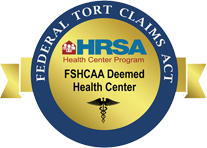
Your newborn baby is born with 20 teeth under the gum line. The first tooth typically appears between 6 months and 1 year of age, and most children have all 20 of their baby teeth by 3 years of age. When your infant starts teething, it can be a challenging time. However, there are several ways to help soothe your child.
Signs Your Baby is Teething
The symptoms are not the same for every baby, but they may include:
- Swollen, tender gums
- Irritability or fussiness
- Trying to bite, chew, and suck on everything
- Excessive drool
- Redness, irritation, or a rash due to extra saliva on your baby’s chin or cheeks
- Changes in appetite
- Trouble sleeping
- Low grade fever (<100.4 F)
Teething does not cause fevers or diarrhea. If your baby has a temperature above 100.4 F and has diarrhea, you should speak to your pediatrician.
Typically, the first tooth to appear is one of the central incisors on the bottom. You can inspect your child’s gums for any bumps, a sign of newly surfacing teeth. Teething may be slower for some babies than others, so infants can have symptoms months before a tooth appears.
There are several ways to soothe gums. The most effective treatments include pressure, using cold items, and giving your baby something safe to chew. It is tough to see your baby start teething and experiencing pain, so try these methods to help ease the discomfort.
1. Massage the Gums
Applying pressure to your infant’s gums may help ease the pain. After thoroughly cleaning your hands, lay your baby on the bed and massage their gums gently with your finger. This may help your baby relax and fall asleep.
2. Get a Cold Washcloth
Using a clean washcloth, soak it in water and wring it out until just damp. Then place the washcloth in the fridge or freezer to make it cold. After it is nice and cool, fold the washcloth and give to your baby to chew. You should never leave your baby unattended if they are chewing on something, even a washcloth, because this could be a choking hazard.
3. Refrigerate Pacifier or Teething Toy
If your baby uses a pacifier, you can also use it to soothe their gums by cooling it down in the refrigerator. The coolness may help to numb the gums and relieve some pain. You can follow the same steps with teething toys by placing them in the fridge. You will want to stay away from using liquid or gel-filled toys, which could leak.
4. Freeze Milk Popsicles
Some babies will eat less or not eat while they are teething. This is because of the discomfort. If possible, you should find BPA-free popsicle forms and fill them with breastmilk/formula.
5. Wipe Away Excess Drool
It is helpful to have your baby wear a bib while they are teething. You should make it a priority to wipe away drool from your baby’s face to help prevent further irritation or rash.
6. Cold Fruit
If you have introduced your baby to solid foods, you could try freezing foods for baby to chew on. Place chilled mashed banana, apples, pears, or strawberries in a mesh feeder for your baby to suck on. The mesh feeder will help prevent choking. You should always monitor your baby, and make sure your infant is old enough to try these treats.
7. Extra Cuddle Time
Sometimes the best way to help a baby in discomfort is extra cuddle time. Rocking in a chair or carrying a baby in a carrier can help provide both of you with needed rest. If you breastfeed, do not be afraid to give your baby additional nursing sessions for comfort.
8. Pain Medications
Pain medications usually are not needed for the mild discomfort of teething. Fussiness often gets better with gum massage. If not, you can give an acetaminophen product (such as Tylenol). If age over 6 months, another choice is an ibuprofen product (such as Advil). Just do this for one or two days. Please always follow the direction of your pediatrician for dosage and duration.
It is a good idea to stay away from teething gels and tablets that contain lidocaine or benzocaine. They can be harmful and often numb a baby’s mouth, causing issues with swallowing.
How Long Does Baby Teething Last?
There is no set timetable on how long your baby will go through teething. This process could last a couple of days to months. Each infant handles the pain differently. The pain typically subsides once the tooth has emerged through the gums. There is usually a break between teeth, although the time frame can vary.
Caring for Your Baby’s New Teeth
You should start caring for your baby’s tooth as soon as it appears through the gums. It is important to wipe off the tooth before bed. You can use a damp, clean washcloth, or a soft-bristled baby toothbrush with a rice size amount of toothpaste.
Good hygiene starts early. Once that first tooth appears, the American Dental Association recommends scheduling your child’s first dental visit.
– Brooke Simons, BSDH, RDH, is a dental hygienist at Health West Pocatello’s dental clinic. She has a bachelor’s degree in dental hygiene from Idaho State University. She believes in a gentle and compassionate approach to dental care and is committed to educating patients on the importance of good oral health.







